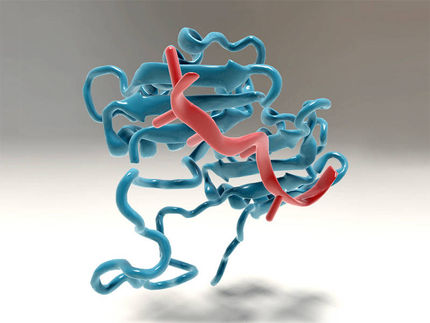New mechanism in gene regulation revealed
The information encoded in our genes is translated into proteins, which ultimately mediate biological functions in an organism. Messenger RNA (mRNA) plays an important role, as it is the molecular template used for translation. Scientist from the Helmholtz Zentrum München and the Technische Universität München, in collaboration with the Centre for Genomic Regulation (Barcelona, Spain) and colleagues in Grenoble, France, have now unraveled a molecular mechanism of mRNA recognition, which is essential for understanding differential gene regulation in male and female organisms. The results are published in the scientific journal Nature.
The number of genes in humans, mice and fruit flies is almost identical, around 20.000, and thus cannot explain the phenotypic differences between these organisms. Thus, for the evolution of life not only the number of genes but also the regulation of these genes plays a critical role. Upon transcription of the DNA, mRNA is produced as an initial step, which subsequently functions as template for the synthesis of proteins. Protein synthesis is regulated by the binding of regulatory proteins to the mRNA. How these proteins specifically recognize the RNA has been poorly understood to date.
An international team, led by Helmholtz Zentrum München (HMGU) and Technische Universität München (TUM), has now determined the three-dimensional structure of such a regulatory protein-RNA-complex. Crystallography and NMR spectroscopy analysis performed by the Munich team was complemented with small angle scattering data performed at the Institut Laue Langevin in Grenoble. The scientists studied the specific complex formed between the regulatory proteins Sxl (Sex-lethal) and Unr (Upstream-of-N-Ras) with mRNA in the fruit fly model. This protein complex is essential to ensure that the expression of genes located on the two female (XX) X-chromosomes equals that of genes located on the single male (XY) X-chromosome. This guarantees that comparable protein concentrations are achieved in both sexes, which is essential for viability of fruit flies.
A paradigm for gene regulation
The three-dimensional structure now reveals how multiple proteins collaborate for highly specific recognition of the mRNA. “Our results represent a paradigm for the regulation of various essential cellular processes at the level of mRNA”, explains Sattler, director of the Institute of Structural Biology at HMGU. The specific recognition of mRNA is achieved by cooperation of several RNA-binding proteins, even though these proteins individually exhibit poor binding affinity and are involved in distinct processes in the cell. By combining multiple proteins, the number and variety of biological processes that can be regulated by a relatively small number of regulatory RNA binding proteins, is greatly expanded.
The authors expect that this principle represents an essential and widespread mechanism of gene regulation in higher organisms, where mutation or misregulation of homologous proteins has been implicated in disease.
Original publication
Other news from the department science
Most read news
More news from our other portals
See the theme worlds for related content
Topic World Spectroscopy
Investigation with spectroscopy gives us unique insights into the composition and structure of materials. From UV-Vis spectroscopy to infrared and Raman spectroscopy to fluorescence and atomic absorption spectroscopy, spectroscopy offers us a wide range of analytical techniques to precisely characterize substances. Immerse yourself in the fascinating world of spectroscopy!

Topic World Spectroscopy
Investigation with spectroscopy gives us unique insights into the composition and structure of materials. From UV-Vis spectroscopy to infrared and Raman spectroscopy to fluorescence and atomic absorption spectroscopy, spectroscopy offers us a wide range of analytical techniques to precisely characterize substances. Immerse yourself in the fascinating world of spectroscopy!


























































